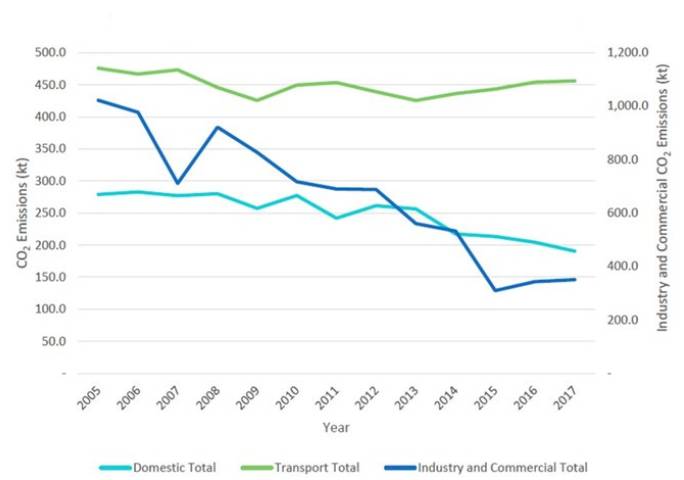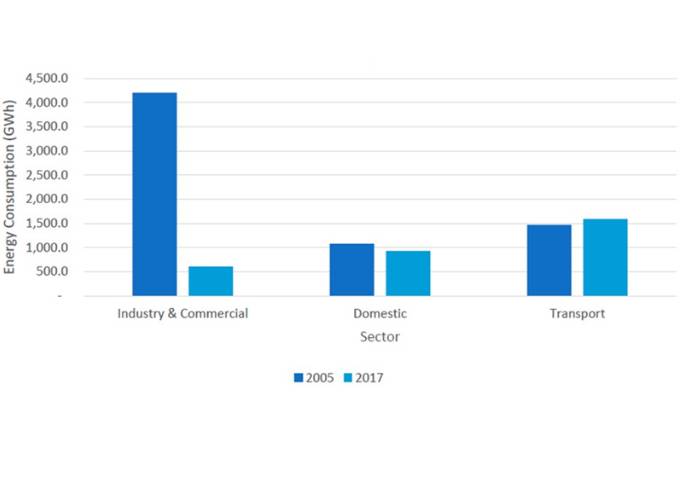Local data
Setting climate commitments for Tonbridge and Malling
The Tyndall Centre for Climate Research has carried out an analysis of the UK’s carbon budget for delivering the Paris Agreement's commitment to staying "well below 2°C and pursuing 1.5°C global temperature rise".
Based on their assessment, they recommend that the borough of Tonbridge and Malling stay within a maximum cumulative carbon dioxide emissions budget of 6.4 million tonnes (MtCO2) between 2020 and 2100. Based on 2017 carbon dioxide emissions, Tonbridge and Malling would use the entire budget by 2027.
Staying within the carbon budget will only be possible if Tonbridge and Malling rapidly transition away from fossil fuel use. There will be significant challenges ahead, which we will need to confront in order to make a difference.
Figure 1 below shows the total carbon emissions by sector for Tonbridge and Malling (BEIS, 2019).



